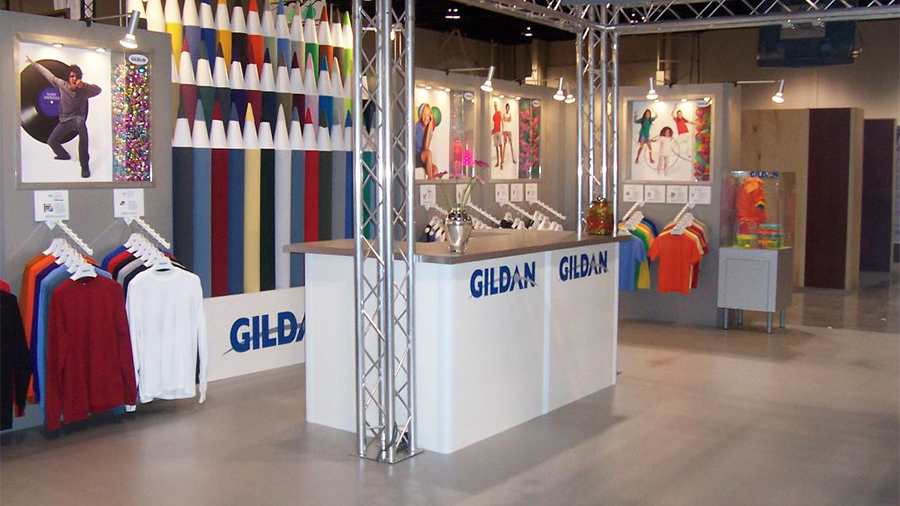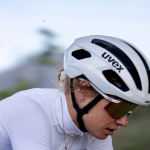Gildan Activewear, Inc. reported sales grew 14 percent in the fourth quarter and 46 percent in the fiscal year ended January 2. Adjusted EPS also improved significantly in both periods and the basics and activewear provided a three-year financial outlook.
“I am extremely proud of our team’s performance in 2021 which allowed us to capitalize on improving demand and deliver meaningful benefits from our Back to Basics strategy. We ended the year with a strong finish, growing above pre-pandemic levels and setting record results to build on,” said Glenn J. Chamandy, president and CEO. “As we look to 2022 and beyond, we are building on our Back to Basics principles and heightening our focus towards the next phase of our journey with our “Gildan Sustainable Growth” plan centered on three key pillars — enabling growth through Capacity Expansion, Innovation and ESG. By leveraging our competitive advantage as a low-cost vertically-integrated manufacturer and executing on projected capacity expansion plans, delivering superior quality, value-driven and innovative products to our customers, and leveraging our strong ESG standing, we are confident that we can drive strong organic revenue growth, profitability and effective asset utilization to deliver strong shareholder value and make meaningful advancements on our ESG priorities.
“We generated record sales for the fourth quarter of $784 million, up 14 percent over the prior year and 19 percent above the fourth quarter of 2019. We delivered another quarter of strong adjusted gross margin and SG&A performance, which together drove adjusted operating margin of 20.4 percent, up 510 basis points versus last year and 630 basis points above the fourth quarter of 2019. Strong sales and margin performance translated to record earnings for the quarter with GAAP diluted EPS of $0.89 and adjusted diluted EPS of $0.76 which was up 69 percent over last year and 85 percent from the same quarter in 2019. Free cash flow in the quarter totaled $116 million, bringing the total for the year to a record level of $594 million. During the fourth quarter, we repurchased approximately 3.2 million shares under our normal course issuer bid (NCIB) program at a total cost of approximately $123.4 million and followed by additional buybacks of close to 2.7 million shares during the first two months of 2022, bringing us close to completing the initial share allotment under our current plan. For the full year, the company returned more than $335 million of capital to shareholders through a combination of share repurchases and dividend payments. After taking into account the acquisition of Frontier Yarns, which we completed in the quarter, we ended fiscal 2021 with a net debt1 position of $530 million and a net debt to adjusted EBITDA ratio1 of 0.7, below our target range of one to two times adjusted EBITDA1. Consequently, given our outlook for free cash flow generation, valuation considerations and strong ongoing return of capital capability, we announced a 10 percent increase in the amount of our quarterly dividend and an increase in the size of our NCIB from 5 percent to up to 10 percent of the public float as at July 31, 2021 (the reference date for the NCIB),” concluded Chamandy.
Fourth Quarter 2021 Results
Net sales for the fourth quarter ending January 2, 2022, of $784 million were up 14 percent over the prior year, consisting of activewear sales of $627 million, up 17 percent, and sales of $157 million in the hosiery and underwear category, up 3 percent compared to the prior-year quarter. The overall sales increase was largely driven by higher activewear sales volumes and net selling prices, partly offset by a weaker product mix related to the year-over-year timing of fleece sales. The growth in activewear sales volumes reflected the combination of higher point of sales (POS) and to a lesser extent the impact of some distributor restocking in the North American imprintables channel, although inventory levels in the North American imprintables channel continue to remain well below pre-pandemic levels.
Compared to 2019, net sales in the quarter were up 19 percent driven by strong performance in activewear. The overall sales increase was primarily due to higher activewear unit sales volumes and net selling prices, as well as favorable product mix, partly offset by lower sock sales. Sales volume growth in activewear products reflected the continuation of positive sell-through trends in the North American imprintables channel and the impact of the non-recurrence of distributor inventory de-stocking that occurred in the fourth quarter of 2019, as well as higher sales of activewear sold through retail channels. The positive impact of these factors was offset in part by lower international shipments, as international POS levels in the quarter continued to lag pre-pandemic levels given the impact of the Omicron variant and lockdowns in various regions.
The company generated gross profit of $229 million in the fourth quarter, and adjusted gross profit1 of $240 million up 48 percent and 35 percent, respectively, over the prior year, driven by growth in sales and strong margin performance. Gross margin of 29.2 percent in the quarter was up 670 basis points over 2020. Before reflecting SKU rationalization inventory charges and the net impact of accrued insurance recoveries in both years, the adjusted gross margin of 30.6 percent was up 480 basis points compared to 25.8 percent last year. The improvement over 2020 was primarily due to higher net selling prices and manufacturing efficiencies stemming from its Back to Basics initiatives, which more than offset inflationary pressures on raw material and other manufacturing costs, as well as unfavorable product mix compared to the same quarter last year.
Compared to the fourth quarter of 2019, adjusted gross margin was up 500 basis points primarily due to higher net selling prices, favorable product mix and Back to Basics cost efficiencies, partially offset by higher raw material and manufacturing costs.
SG&A expenses for the fourth quarter of $81 million were up $9 million or 12 percent compared to $72 million last year primarily due to higher variable compensation expenses, partly offset by cost savings stemming from our Back to Basics initiatives. As a percentage of net sales, SG&A expenses improved slightly to 10.3 percent compared to 10.4 percent last year, due mainly to volume leverage and cost savings. Compared to the fourth quarter of 2019, SG&A expenses as a percentage of sales were lower by 130 basis points.
Operating income in the fourth quarter of $177 million, or 22.6 percent of sales, was up from $79 million, or 11.4 percent of sales last year. On an adjusted basis, before reflecting SKU rationalization charges, the net impact of accrued insurance recoveries, and restructuring and acquisition-related costs in both years, as well as a net reversal of impairment of intangible assets of $32 million in the fourth quarter of 2021, generated adjusted operating income of $160 million, or 20.4 percent of sales, compared to $106 million, or 15.3 percent of sales, in the fourth quarter of 2020.
The reversal of impairment relates to the company’s Hosiery Cash Generating Unit (CGU), for which the company had recorded an impairment charge in the prior year and which now has been reversed to the full extent possible given the improved economic environment and outlook for this category. Year-over-year increases in operating and adjusted operating income reflected higher sales and higher gross and adjusted gross margin, partly offset by higher SG&A expenses. Net financial expenses of approximately $5 million were down more than $8 million over the prior year. As a result, the company reported net earnings of $174 million, or $0.89 per diluted share, for the fourth quarter of 2021 and adjusted net earnings1 of $149 million, or $0.76 per diluted share. This compared to net earnings of $67 million, or $0.34 per diluted share, and adjusted net earnings of $90 million, or $0.45 per diluted share, respectively, in the fourth quarter last year.
Gildan generated free cash flow in the quarter totaling $116 million, which together with free cash flow generation through the year allowed us it to deliver $594 million in 2021, up from $358 million last year. The increase was driven by strong earnings, improved working capital management and the timing of insurance collections related to the 2020 hurricanes. The company ended 2021 with a net debt position of $530 million, down from $577 million at the end of 2020 and a net debt leverage ratio of 0.7 times adjusted EBITDA.
Full Year 2021 Results
Gilden delivered record net sales of $2,923 million in 2021, up 48 percent from the prior year, reflecting increases of 58 percent in activewear and 16 percent in the hosiery and underwear category compared to 2020. Its sales performance in 2021 reflected a recovery in demand from 2020 hard hit by the pandemic. Compared to 2019, its sales growth improved through the year, with sales returning to above pre-pandemic levels in the second half. The year-over-year increase in activewear sales where it generated sales of $2,365 million was due to volume increases in all channels, a favorable product mix and higher net selling prices. Higher activewear sales volumes were driven by a recovery in POS and the impact of the non-recurrence of inventory de-stocking by distributors which occurred in 2020. The overall sales increase in the hosiery and underwear category where it generated $558 million was also driven by higher sales volumes in underwear and sock products compared to last year, as well as a favorable product mix.
The company generated a gross profit of $940 million and a gross margin of 32.2 percent compared to $249 million and 12.6 percent, respectively, in the prior year. On an adjusted basis, gross profit for 2021 totaled $903 million compared to $306 million in the prior year, resulting in an adjusted gross margin in 2021 more than doubling to 30.9 percent from 15.3 percent in 2020. The year-over-year improvement in gross and adjusted gross margin was mainly due to a much stronger product mix, the non-recurrence of COVID-19 and certain Back-to-Basics related charges incurred primarily in the first half of 2020, higher net selling prices, cost benefits from Back-to-Basics initiatives, and lower raw material costs. The gross margin improvement in 2021 also included the recognition of higher net insurance gains of $36 million related to the 2020 hurricanes and lower year-over-year SKU rationalization charges.
SG&A expenses of $314 million in 2021 were up $42 million compared to 2020, primarily due to higher variable compensation expenses and higher volume-driven distribution costs, partly offset by cost savings stemming from our Back-to-Basics initiatives. As a percentage of sales, SG&A expenses improved 290 basis points to 10.8 percent of sales compared to 13.7 percent last year, reflecting the benefit of volume leverage and unit cost efficiencies.
Restructuring and acquisition-related costs incurred in 2021 of $8 million related mainly to the completion of previously initiated restructuring activities and also included acquisition costs related to the Frontier acquisition completed in the fourth quarter. This compared to restructuring and acquisition-related costs of $48 million in 2020, primarily in connection with Back-to-Basics initiatives, including the consolidation of manufacturing operations and other manufacturing optimization initiatives. In 2020, we recorded an impairment charge for our Hosiery CGU of $94 million due to the adverse impact of the pandemic on global economic activity. In 2021, given the improvement in the economic environment and outlook for this category, the company recorded a related net reversal of impairment of $32 million.
After reflecting on the above items for both years, Gildan generated an operating income of $652 million in 2021 compared to an operating loss of $181 million in 2020. Excluding the impact of restructuring and acquisition-related costs, charges related to rationalized product SKUs, net insurance gains, the reversal of impairment of intangible assets in 2021, and the impairment of goodwill and intangible assets in 2020, adjusted operating income in 2021 amounted to $591 million compared to $18 million last year. The improvement reflected the significant year-over-year sales recovery, strong adjusted gross margin performance and SG&A leverage. Consequently, it reported net earnings of $607 million, or $3.07 per share on a diluted basis, and adjusted net earnings of $538 million, or $2.72 per diluted share. This compared to a net loss of $225 million, or $1.14 per diluted share and an adjusted net loss1 of $36 million, or $0.18 per diluted share in 2020.
Gildan Sustainable Growth Strategy
“We are pleased with the success of our Back to Basics strategy which structurally improved the economics of our business, allowing us to deliver top tier profitability in 2021 with operating margin performance above our 18 percent target,” said Chamandy. “Today, we stand as a less complex, more competitively advantaged organization, stronger than we have ever been and well-positioned for sustainable growth.
“During the fourth quarter, we completed a comprehensive strategic planning process to define the underlying initiatives to support our next phase of growth under what we term as the “Gildan Sustainable Growth” strategy. While Back to Basics will remain at our core, efforts under this strategy primarily focused on reducing complexity and enhancing operational effectiveness and ultimately operating profitability. The Gildan Sustainable Growth strategy focuses on building on our Back to Basics principles and driving organic top-line and bottom-line growth through capacity expansion, innovation, and strong ESG integrated in all aspects of how we do business. We are confident that the initiatives underpinning our revised strategy will position us to create strong value for our shareholders over the long term,” continued Chamandy.
Under the Gildan Sustainable Growth plan and based on everything the company sees today, including the assumption of continued global recovery, its current outlook over the next three years reflects the following:
- Net sales growth at a compound annual growth rate in the range of 7 percent to 10 percent;
- Annual adjusted operating margin in the range of 18 percent to 20 percent;
- Capital expenditures, as a percentage of sales, of 6 percent to 8 percent over the next three years to support long-term growth and vertical integration;
- Maintaining net debt leverage within its target framework of net debt to adjusted EBITDA of 1.0x to 2.0x; and
- Annual dividend growth and continued share repurchases in line with its leverage framework and valuation considerations.
Photo courtesy Gildan
















